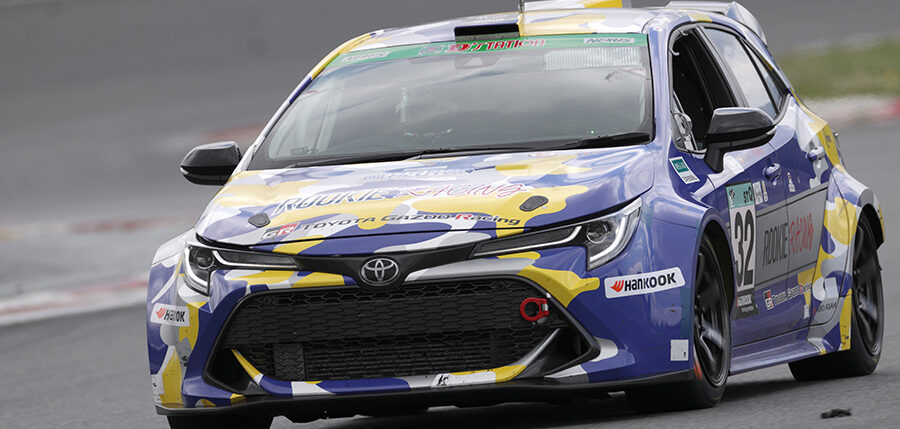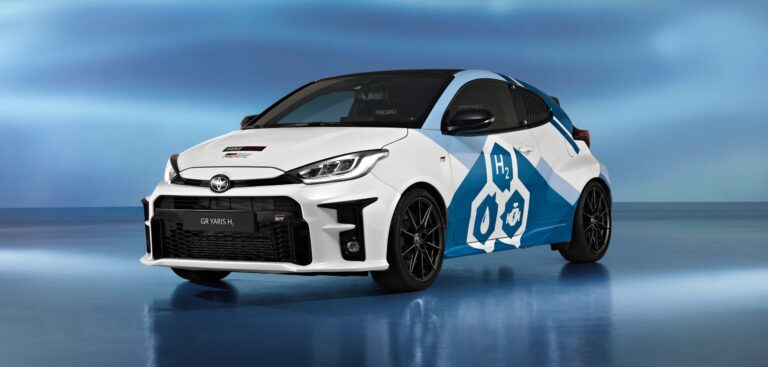Alongside its ongoing project to test a hydrogen-fueled IC engine under racing conditions in Japan’s Super Taikyu series using a modified Corolla, Toyota has unveiled a hydrogen-powered Yaris GR. Both cars feature the same G16E-GTS, 1.6-liter, in-line three-cylinder, turbocharged engine that is found in the regular GR Yaris, but with a modified fuel supply and injection system for use with hydrogen as fuel.
Toyota notes that the hydrogen combustion engine technology is still in the early stages of conceptual development and experimentation – it was started in 2017 – and is not yet ready for commercialization. Nonetheless, development of the racing Corolla in Japan is progressing at pace, with impressive performance gains since its debut.
Akio Toyoda, president of Toyota Motor Corporation, who has been driving the competition car, commented. “We’ve taken the first step to compete with and develop our hydrogen-powered engine with the mindset of taking on the challenge. I imagine things will look a little different 10 years from now, and I hope people will look back and see how we took on the challenge with positivity and enjoyed every moment of it.”
The hydrogen engine Corolla (below) made its debut at the Fuji Super Tec 24 Hours Race in May, with a stated goal of accelerating the pace of development of Toyota’s hydrogen-fueled IC engines. Since that race, Toyota says it has implemented a number of improvements both to the car and to its related hydrogen infrastructure. These have included modifications to the engine calibration, which have increased combustion stability while also netting a 15% torque increase and a 9% increase in power. The responsiveness of the engine has also been improved.
 One of Toyota’s main goals was to increase reliability, with the car having to make several extended stops during its first 24-hour race; there were no unscheduled stops at the latest Autopolis round it competed in. Impressively, Koji Sato, president of Toyota Gazoo Racing, also reported that 40kg had been shaved from the overall vehicle weight.
One of Toyota’s main goals was to increase reliability, with the car having to make several extended stops during its first 24-hour race; there were no unscheduled stops at the latest Autopolis round it competed in. Impressively, Koji Sato, president of Toyota Gazoo Racing, also reported that 40kg had been shaved from the overall vehicle weight.
From an infrastructure perspective, Toyota says that refueling times have been reduced by 40%, from approximately five minutes to around three, thanks to an increase in the fuel flow rate from the three mobile hydrogen filling rigs it used. However, there remain challenges around NoX emissions levels as well as the practicalities of fuel storage and transportation, before mass market adoption can be considered.


